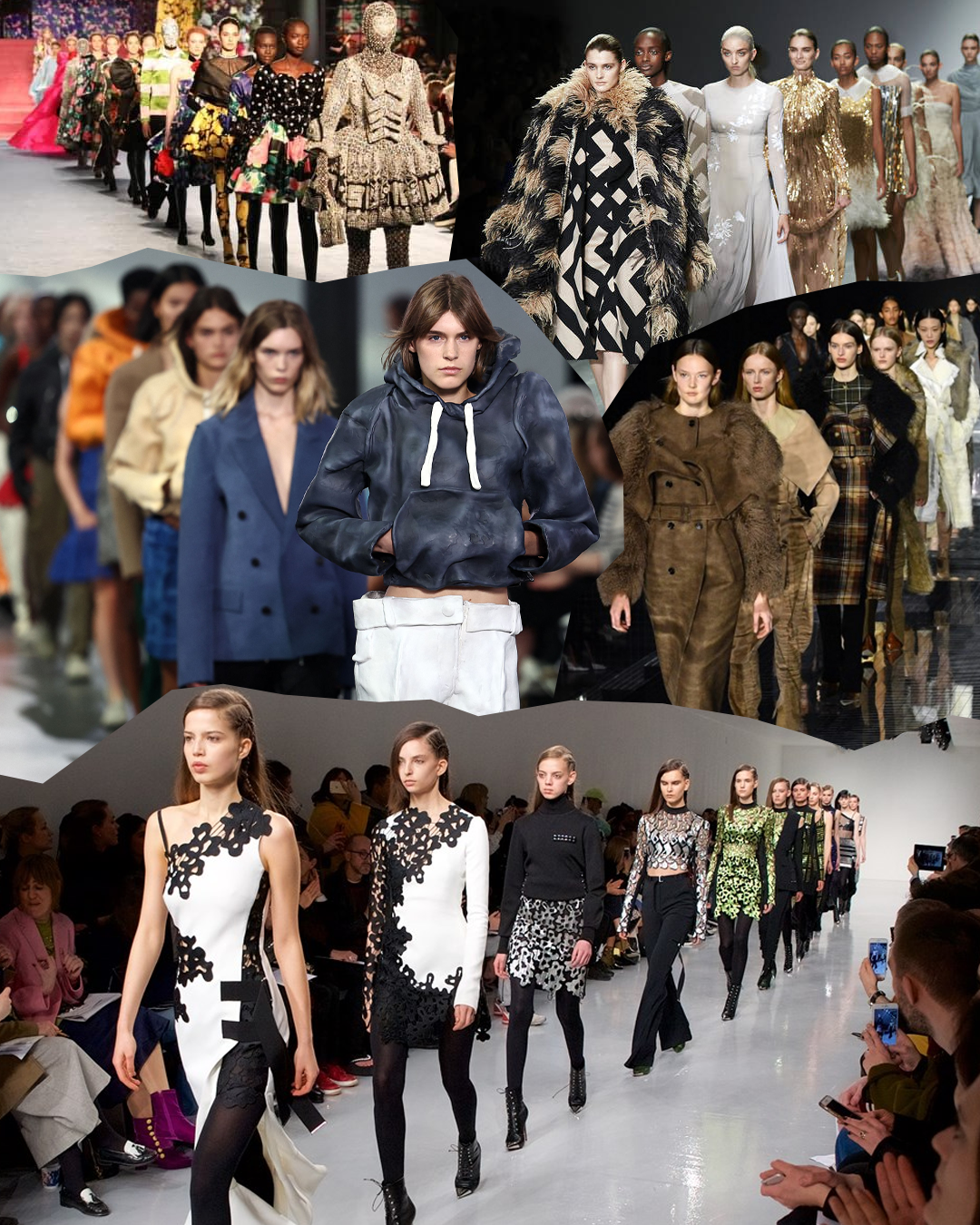Fat Anna Wintour’s Fashion Squeeze: London Fashion Week’s Flop Era - An Analysis
Words: Anastasia Vartanian
Make it stand out
Ladies, start your engines, London Fashion Week has begun. There’s a more optimistic feeling this season: 18% more designers are showing than in February and the British Fashion Council’s new CEO announced new, designer-first measures. Still, the discourse around LFW has been revolving around two words: flop era.
The previous season was only 4 days long, half of Paris. For years, British designers have been decamping in droves to the European fashion weeks. Cult favourites like Martine Rose, Kiko Kostadinov and Grace Wales Bonner have all left the London calendar. Even Victoria Beckham, a household name, started showing in Paris in 2022. When the June edition of LFW was cancelled earlier this year (traditionally the men’s shows) it felt like a death knell.
This didn’t just happen on a whim, of course. There’s a few factors that explain the dwindling LFW schedule. A huge culprit is Brexit, which (shockingly) made customs barriers more challenging and costly. This affected small and medium fashion businesses the most, which make up only… 99.7% of the British fashion industry.
Leaving the EU also made it more difficult for buyers, press and models to come to the UK. With these challenges, why even bother going to London? The only major luxury brand on the schedule was Burberry, anyway. And if there’s no buyers and press, it makes the tens of thousands spent on a runway seem just a tad unnecessary. For the designers that have stayed in the city, sitting out seasons and showing only once a year or throwing more intimate brand dinners has become increasingly commonplace.
But we can’t blame this only on Brexit: British fashion manufacturing (once thriving) has been suffering for over a decade due to a lack of government funding. Fashion as a whole is undervalued in this country, despite bringing in a reported £21 billion to the economy and being the largest employer of all creative industries. It is not invested in by the government to the same extent that it is in Paris or Milan, where fashion is seen as an important part of their cultural heritage.
“The cultural power, known as ‘soft power’, of fashion and the creative arts should not be underestimated. Despite being a small island, the UK’s cultural exports have traditionally rivalled much bigger countries. It’s part of what makes this country at least kind of relevant internationally.”
That’s not to say that British designers are completely without support. The NEWGEN scheme, for example, was launched in 1993 by the British Fashion Council, and provides a number of emerging designers with grants and supports them with putting on shows. You may have heard of some of its alumni: Alexander McQueen, Simone Rocha and Kim Jones.
Talent incubators like Fashion East and Sarabande are also vital in platforming young designers and helping them start out. But so much young talent makes their debut, becomes buzzy in the press for a short while, then disappears, because they simply can’t take their business to the next level. The lack of infrastructure, combined with not enough business focus in British fashion education and the ever-rising cost of living in London makes it a tough landscape to navigate.
The thing is, while London Fashion Week may be in its flop era, British designers certainly aren’t. London has always been known as the city for raw talent, rebellious designs and unbridled creativity. Many of the designers at luxury houses in Paris and Milan right now are Brits or came up through LFW: Sarah Burton at Givenchy, Peter Copping at Lanvin, Louise Trotter at Bottega Veneta, Maximilian Davis at Ferragamo, Harris Reed at Nina Ricci, and – fashion’s current golden boy – Jonathan Anderson at Dior.
The cultural power, known as ‘soft power’, of fashion and the creative arts should not be underestimated. Despite being a small island, the UK’s cultural exports have traditionally rivalled much bigger countries. It’s part of what makes this country at least kind of relevant internationally. Although, with the far-right tomfoolery and blatant displays of racism going on recently, I’m not really feeling much national pride…
My gripe is not that LFW doesn’t have enough clout. For me, the runways I’m most excited to see are not the big brands like Burberry (easy for me to say, I wasn’t invited) but the emerging brands who experiment and set the trends. Some of my favourite work comes from designers who don’t have the funds to put on a show on-season, or even at all. It’s not that I need LFW to be a spectacle – although I do love a party. But if the government does not invest long-term in its creatives, we will completely lose our cultural capital.


